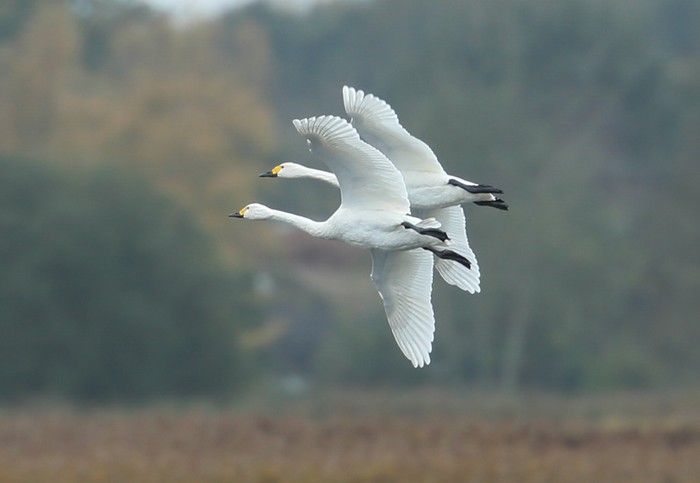Swan Tagging Trouble in the Washes
New research highlights how Whooper and Bewick’s Swans often venture outside protected areas during winter, raising questions about current conservation strategies.
In the bleak midwinter of the Fens, a quiet revolution is unfolding—one tracked not by foot, but by satellite. A new study, published in Ibis, has revealed that significant numbers of wintering Bewick’s Swans are roosting outside of the carefully designated protected areas (PAs) that are supposed to safeguard them. Whooper Swans, too, show signs of this boundary-blurring behaviour, albeit to a lesser extent.

Using GPS tags affixed to 33 swans over several winters, researchers from the University of Southampton and the Wildfowl & Wetlands Trust tracked the movements of these iconic Arctic migrants in southeast England. Their findings highlight a stark mismatch between conservation infrastructure and the reality of avian behaviour: nearly a quarter (23.7%) of recorded Bewick’s Swan nights occurred outside designated reserves such as WWT Welney and the RSPB Ouse and Nene Washes.
The implications are sobering. Protected areas form the bedrock of waterbird conservation across Europe, yet these static boundaries struggle to contain the dynamic lives of migratory swans. “We’ve long known that swans forage widely by day,” says lead author Joshua Wilson, “but the extent to which they choose to roost outside safe zones at night surprised us.”
Roosting Risk and Environmental Drivers
Swans are famously site-faithful during winter, typically commuting between daytime foraging grounds on farmland and wetland roosts by night. These roosts offer refuge from predators and disturbance, particularly in managed reserves where shallow water and isolation minimise risk.
Yet when flooded washes or frozen wetlands limit roost availability, the birds must adapt. Statistical models in the study showed that higher river levels and lower temperatures were strongly correlated with increased use of alternative, unprotected roosts. As reserves became less hospitable, swans moved to irrigation reservoirs and riverside fields—habitats that offer little to no legal protection.
This dispersal carries costs. Outside PAs, swans face elevated risks of disturbance from agricultural machinery, road traffic, and even nocturnal recreation. More alarmingly, any forced take-off in poor visibility increases the risk of fatal collisions with power lines or other obstacles.
Individual Variability, Conservation Complexity
While some individuals—such as two Bewick’s Swans tagged across multiple winters—remained largely faithful to PA roosts, others were more adventurous. One bird, BEWI01, spent 72 consecutive nights roosting entirely outside the known reserves, primarily in a network of irrigation reservoirs along the Little Ouse and River Wissey.
This suggests the presence of semi-stable, unprotected roost groups that have gone largely undocumented. Whether such sites offer adequate safety is unclear, but their use indicates that even in landscapes replete with designated habitat, swans exercise choice—and that choice may not align with our conservation maps.
Whooper Swans, by contrast, showed a lower alternative roosting proportion (4.5%), though the study notes that limited data—mainly from March—may have underrepresented their full range of behaviour.
Implications for Protected Area Design
The findings arrive at a crucial moment. With global biodiversity targets calling for 30% of land to be protected by 2030, understanding how animals actually use protected space is vital. “Conservation planning can’t rely solely on static borders,” Wilson says. “We need more flexible, responsive approaches that account for mobility, especially in a changing climate.”
For the Bewick’s Swan—whose northwest European population has declined by nearly 40% since the 1990s—the stakes are particularly high. As these birds increasingly winter further east in Germany and the Netherlands, adapting UK conservation to their current behaviours becomes ever more urgent.
This study offers a compelling case for satellite telemetry as a conservation tool. It underscores not only the limits of our current protected area frameworks but also the resilience and adaptability of the species they seek to conserve.
25 Mar 2025
Share this story







